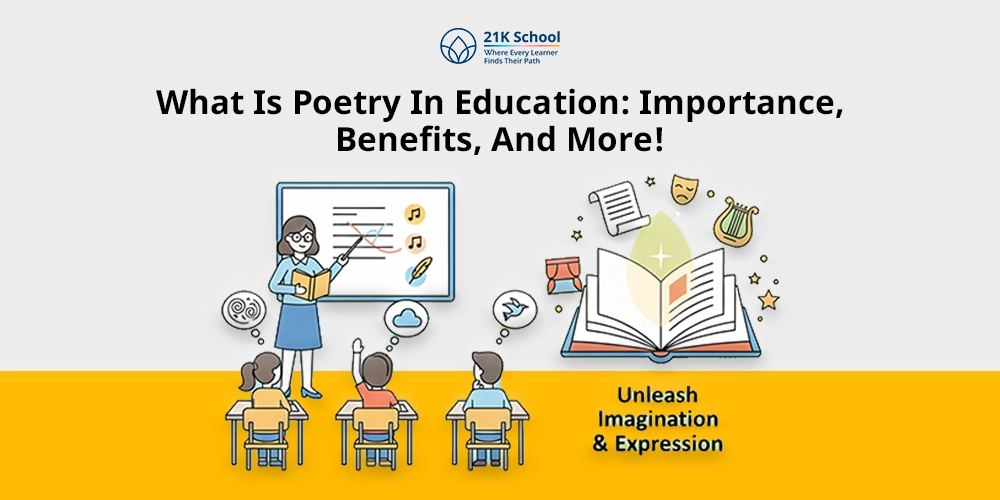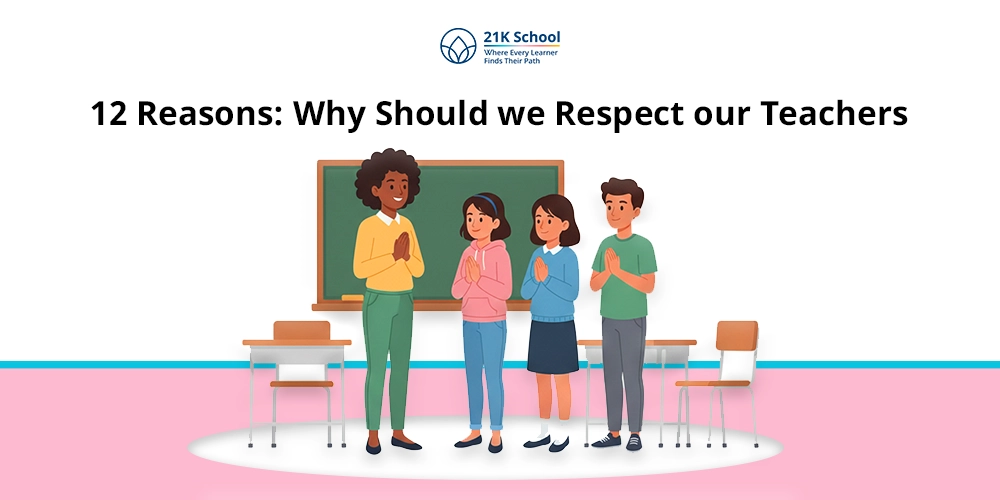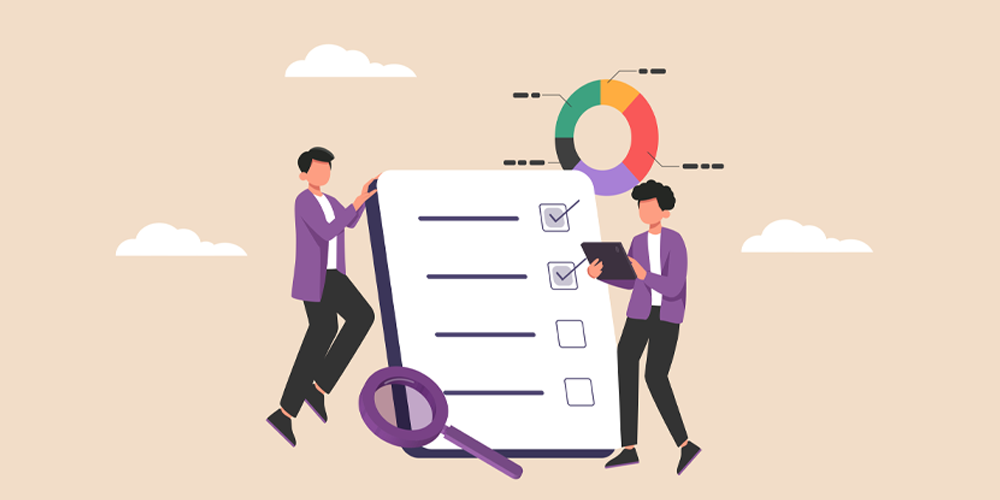
Everything in life is completely dependent on understanding, analyzing and improving their performance, the dependence leads the responsible authority towards assessment and evaluation.
The terms are very much connected to each other but on the contrary they cater to different types of issues and serve distinct purposes, as they have very different and unique characteristics.
While there are interconnectedness between the two, they also have some differences, advantages and disadvantages, as we read through the article it will be more clear.
Let’s start simple, by knowing about assessments and evaluations.
Contents
- What is Assessment?
- Key Features of Assessment
- Examples of Assessments:
- What is Evaluation?
- Key Features of Evaluation
- Examples of Evaluations:
- Difference Between Assessment and Evaluation
- Similarities Between Assessment and Evaluation
- Advantages & Disadvantages of Assessment
- Advantages & Disadvantages of Evaluation
- How Do Assessment and Evaluation Work Together?
- Conclusion
What is Assessment?
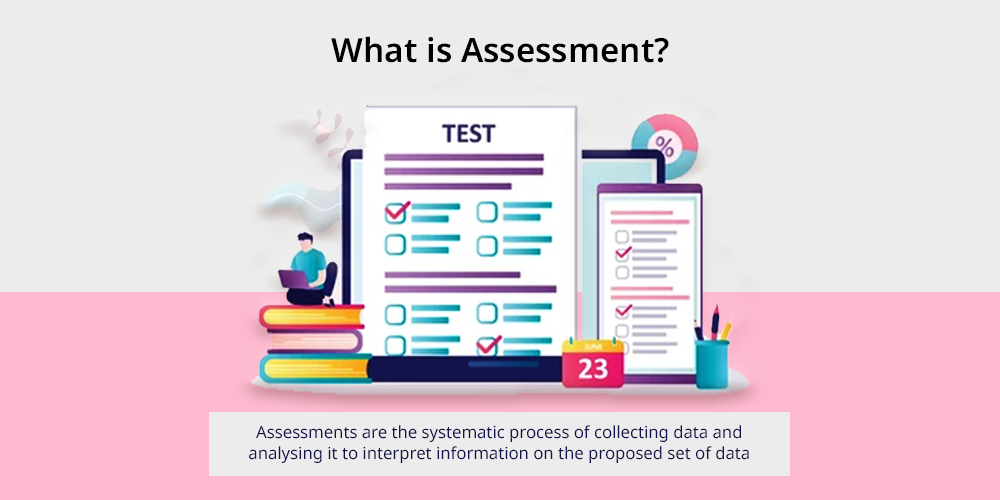
Assessments are the systematic process of collecting data and analysing it to interpret information on the proposed set of data in a given or stated period of time to measure progress and estimate the understanding and skill development in a particular area, like school going young child and even in a professional seeking to switch jobs or grow in his career.
Considering the definition it’s not just a one time event rather an ongoing activity used to gather insights about a learner’s or professional’s performance and identify areas for improvement — ultimately helping a person in his growth journey both personal and professional or in case of learners, academically.
There are some features to assessment that determine the value of impact it has, on a person’s life, and certainly there are a lot of real life examples that help a person in growing and tracking an individual’s progress.
Key Features of Assessment
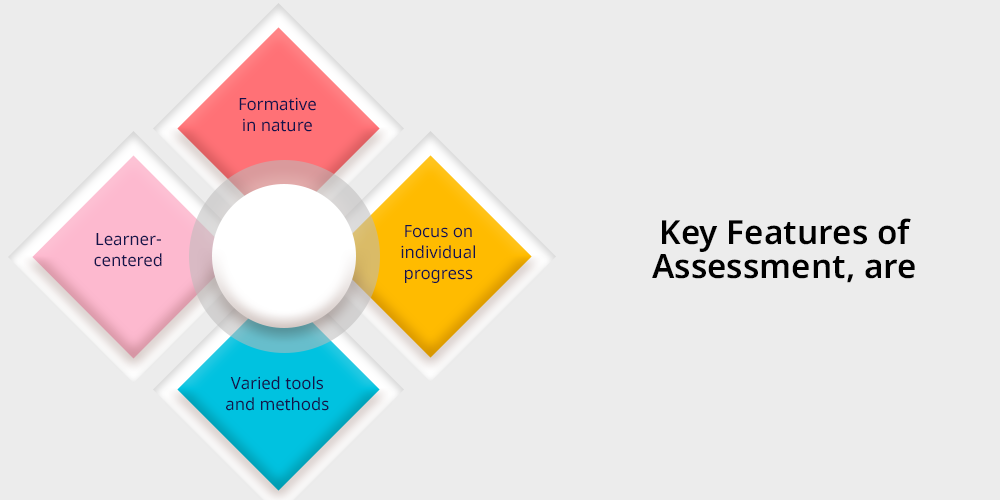
The key features of assessment are formative in nature, focus on individual progress, varied tools and methods, and others like:
1. Formative in nature
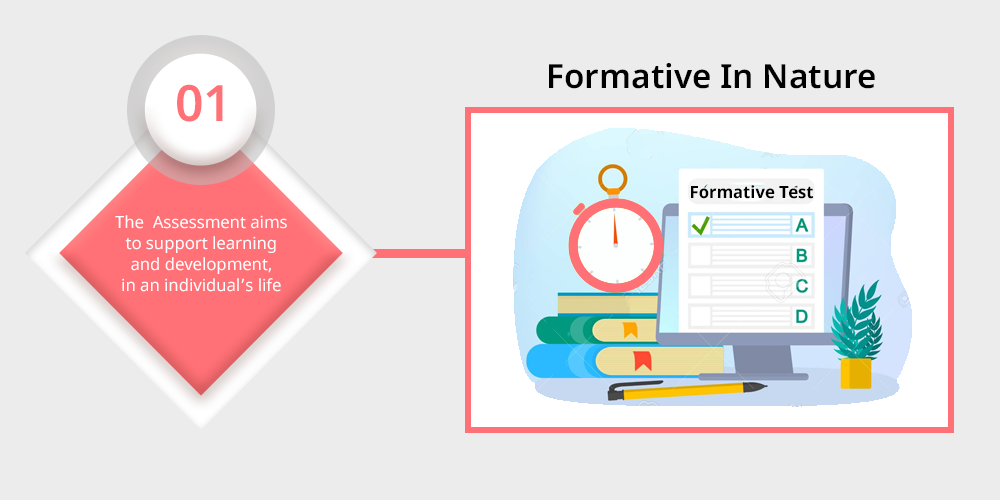
The Assessment aims to support learning and development, in an individual’s life by providing continuous feedback, to them providing them a brief insight into their progress and clearly stating the scope of improvement.
There are many formative test tools of assessment that contribute to collaborative learning that helps learners to grow and succeed in their life plans.
2. Focus on individual progress
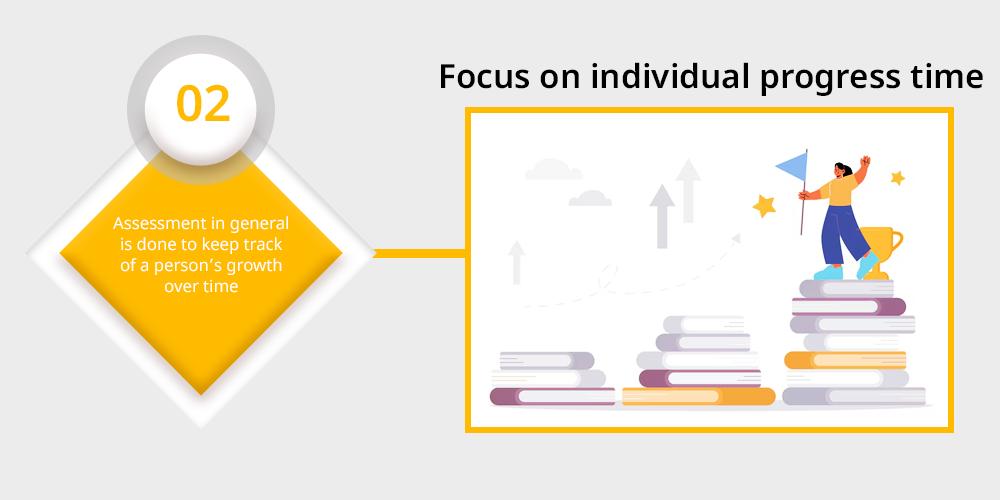
Assessment in general is done to keep track of a person’s growth over time rather than comparing them to others, it basically relates one’s growth over time and not about the competition around.
3. Varied tools and methods

Assessment Is not a one man show, it requires tools like quizzes, observations, assignments, and self-reflections, these are used to assess better and make more accurate and informed decisions.
4. Learner-centered
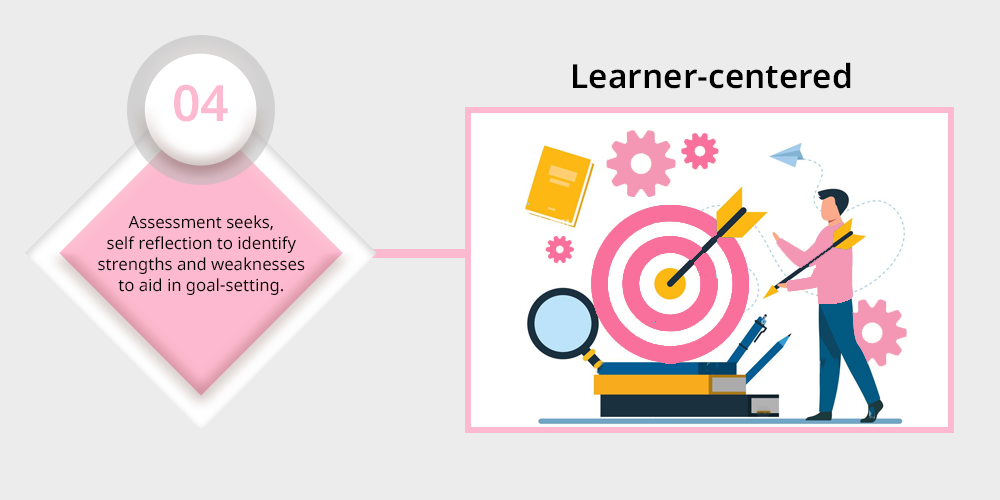
Assessment seeks, self reflection to identify strengths and weaknesses to aid in goal-setting and personal development, for long term development —- basically contributing to lifelong learning .
Examples of Assessments:
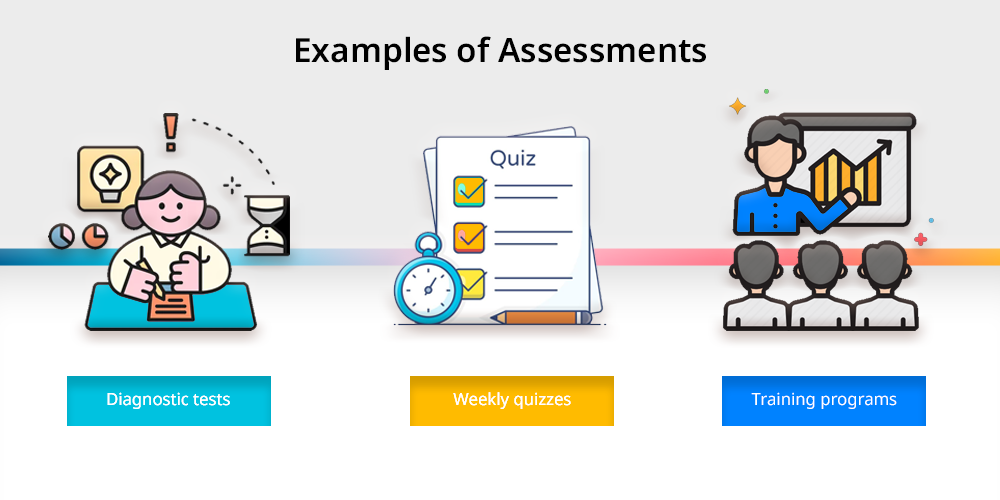
Examples of assessment range from being simple as Diagnostic tests to identify learning gaps or to having Weekly quizzes in academic settings to track continuous improvement and development or even Employee skill audits during training programs.
Now that we know a little about assessment, let’s learn about evaluation and then we can compare one with another.
What is Evaluation?

Evaluation seems similar to evaluation, but it is a broader process that involves making judgements about the effectiveness of a process.
Honestly, it’s not just about that but rather it takes in account different perspectives like: value, significance or development of a person, program or a process.
The process of evaluation is used to collect data in order to determine whether goals or objectives have been met.
And just like assessment, evaluation has its own set of distinctive features that set it apart and adds value to its existence and somewhere that is the reason that it is so widely accepted and implemented.
Explore types of evaluation in education .
Key Features of Evaluation
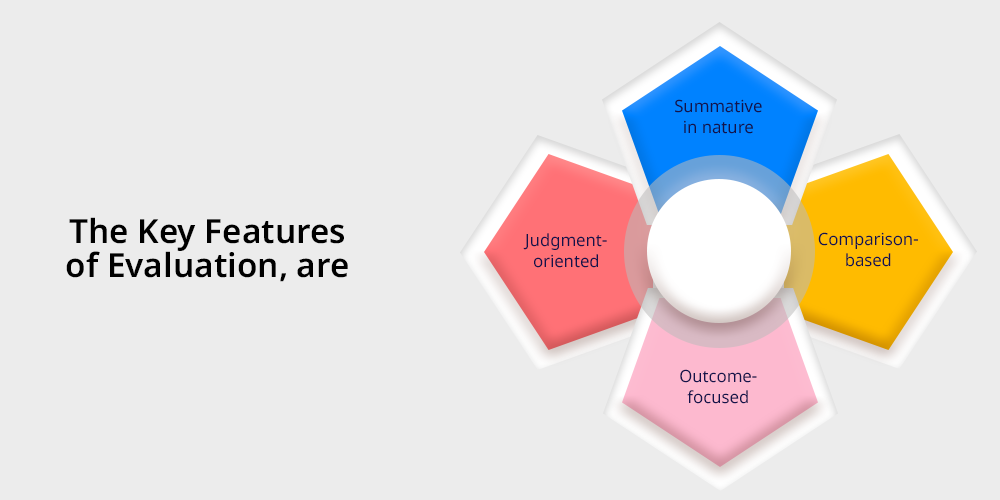
The key features of evaluation are summative in nature, comparison-based, outcome-focused, and others like:
1. Summative in nature
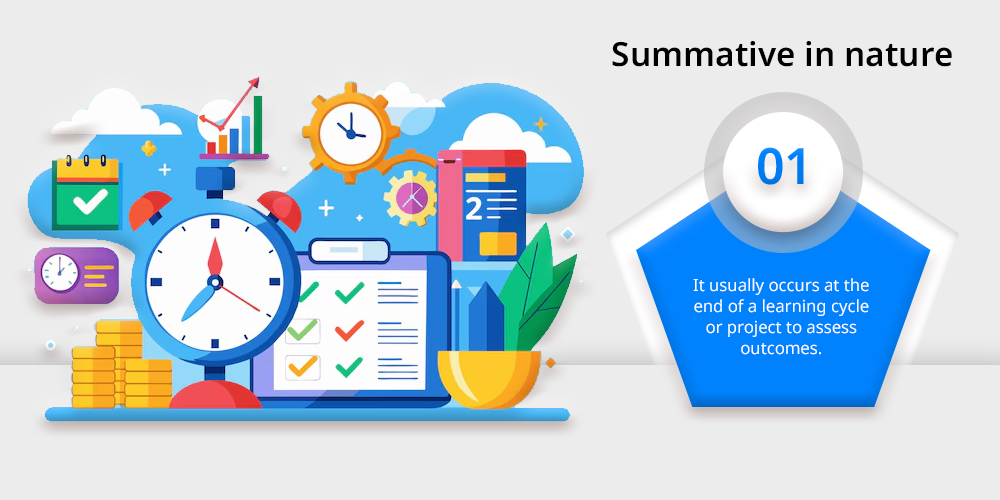
Evaluation is not only a process of data entry or analysing reports; rather, it usually occurs at the end of a learning cycle or project to assess outcomes – for a person, program or process.
2. Comparison-based

Evaluation is said to be a benchmark performance against predefined standards or expectations, it doesn’t matter if its individual performance or team report; the comparison standards are pre-defined.
3. Outcome-focused
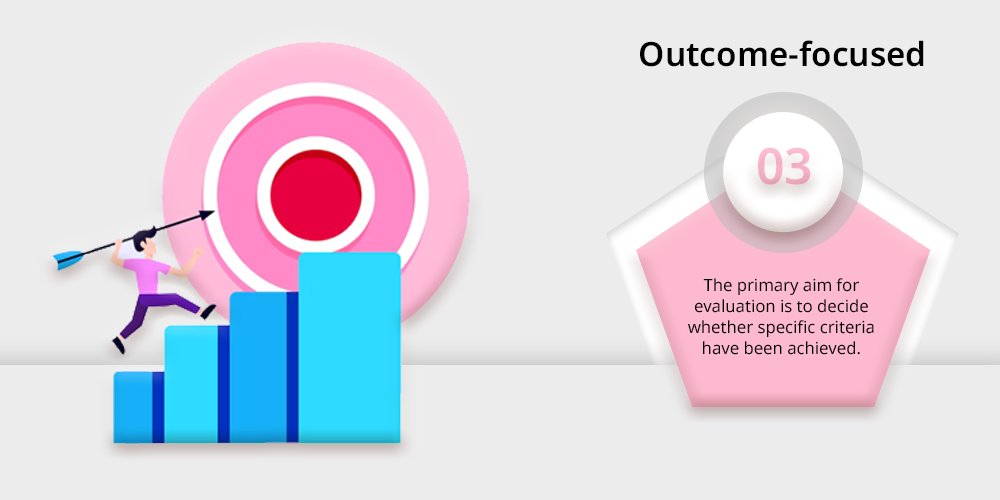
Unlike assessment, the primary aim for evaluation is to decide whether specific criteria have been achieved — it’s about development but on a more rigid side of the comparison.
4. Judgment-oriented
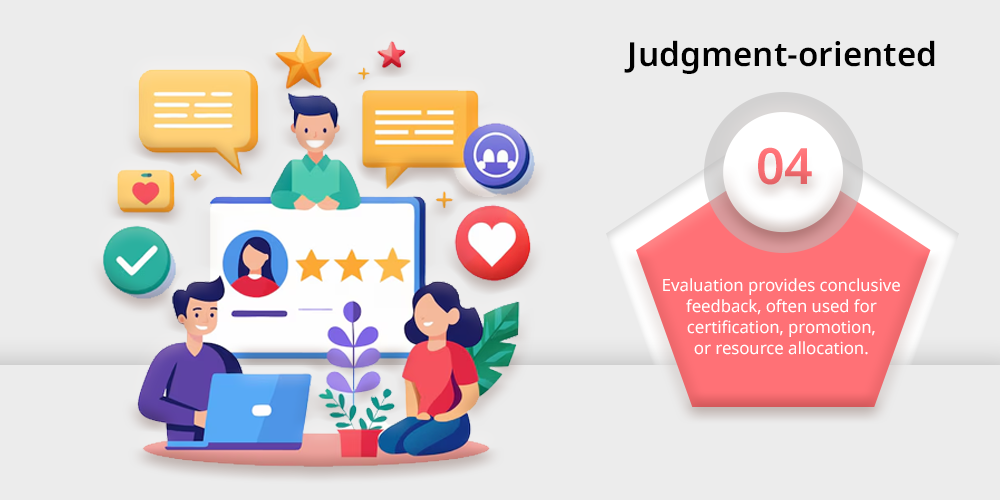
Evaluation provides conclusive feedback, often used for certification, promotion, or resource allocation — it is best suited for an office environment, in departments of sales and marketing where the numbers have more value as compared to the personal development and long term investment in terms of emotions and values — can contribute to social emotional learnings .
Examples of Evaluations:
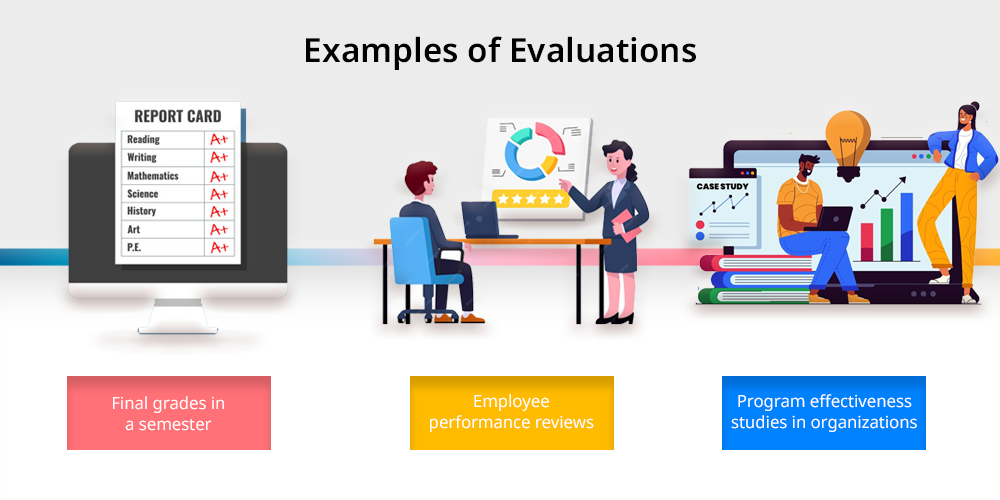
For learners in schools, evaluation is referred to the Final grades in a semester, and for a corporate environment, where employers are responsible for the judgement it is referred to as Employee performance reviews.
Evaluation can also be used in Program effectiveness studies in organizations — where people seek validation for the received opportunity to work better. .
Difference Between Assessment and Evaluation
| Aspect | Assessment | Evaluation |
| Purpose | To improve learning and performance. | To judge effectiveness or outcomes. |
| Nature | Formative and continuous. | Summative and conclusive. |
| Focus | Individual progress and development. | Achievement of objectives and standards. |
| Approach | Diagnostic and learner-centered. | Judgmental and criteria-based. |
| Timing | Ongoing throughout a process. | At the end of a process or cycle. |
| Examples | Quizzes, self-reflections. | Final grades, program evaluations. |
Here is a detailed elaboration of above mentioned table help individuals to understand the difference effectively:
1. Purpose
The main purpose of assessment is improvement in which it acts as an advanced tool to guide learners and facilitators to modify the way they are working.
While the evaluation directly means the judgement or final conclusion showcases whether the goal is achieved or not.
2. Nature
Assessment is formative in nature which means its support throughout the process.
However, evaluation is summative in nature which is judged in the end to find out the success.
3. Focus
The main focus of assessment is learners’ personal growth and progress. On the other hand, evaluation focuses on the measurement and outcome based on a particular standard already set.
4. Approach
Assessment is diagnostic and learner-centered. It identifies challenges or problems and helps learners to develop.
Evaluation mostly approached during the end of year, program, semester, or training.
5. Timing
Assessment is a continuous process that can happen during class, playful activities, or projects. Evaluation is judgement in which results are compared only in fixed criteria.
6. Examples
A quiz, portfolio, or self-reflection journal is an assessment. A final exam grade or a program effectiveness report is an evaluation.
Similarities Between Assessment and Evaluation
Although different, there is a strong interrelationship between assessment and evaluation.
Both processes complement each other and aim to enhance learning and performance.
| S.No. | Aspect | Similarity Between Assessment and Evaluation |
| 1. | Goal | Both aim to improve learning and outcomes. |
| 2. | Measurement | Both involve measuring knowledge, skills, or performance. |
| 3. | Decision-Making | Both provide data to guide decisions in education or work. |
| 4. | Feedback | Both give valuable insights to learners, teachers, and institutions. |
| 5. | Dependency | Individual evaluation is not possible without the support of others, and assessments often involve collaboration. |
Advantages & Disadvantages of Assessment
Understanding the advantages and disadvantages of assessment help learners in effective implementation in education.
1. Advantages
i) Enhances Learning and Improvement
Assessment provides learners proper feedback which helps them to understand their strengths and weaknesses.
By this way, learners can identify the area of improvement in learning and apply useful techniques to improve results.
Continuous assessment has become a good habit especially for the education of students in which they learn self-evaluation.
ii) Measures Academic Progress
Assessment is ideal for measuring academic progress of students. It is effective for many subjects to track educational progress.
Measuring Academy progress by assessment helps teachers and parents to understand the learning graph and readiness for more complex topics.
iii) Encourages Accountability
Effective use of assessment makes students responsible for their own learning.
Understanding the performance after assessment motivates learners to work with more strength.
It will also help facilitators to cross check whether their teaching techniques are effective for students’ education.
2. Disadvantages
i) Can Create Stress and Anxiety
Students sometimes feel stress and anxiety due to continuous assessments.
It also creates a pressure to perform well on each task which leads to burn out and reduce concentration on theoretical learning.
It not only affects academic growth but also students’ mental health .
ii) It May Promote Rote Learning
Some assessments are based on memorising and rote learning which can be a drawback for learners. It can also reduce critical thinking ability .
Instead of gaining deep creative thinking and analytical skills ; it promotes study based on achieving higher grades in exam .
iii) Risk of Bias and Inaccuracy
Judgement only based on assessment can have a wrong or negative impact as a whole.
There are various factors which can affect assessment like test anxiety, language barriers, or cultural differences etc.
Remember, poorly designed assessments can fail to showcase the true abilities of learners.
Advantages & Disadvantages of Evaluation
Given below are detailed advantages and disadvantages of evaluation:
1. Advantages
i) Measures Learning Outcomes
Evaluation is important to understand whether an individual is gaining correct information or not.
Teachers can evaluate each subject to understand the easy and difficult one. The good results teaching method makes sure the teaching method is working effectively.
ii) Provides Feedback for Improvement
One of the advantages of evaluation is it provides regular feedback for improvement in the next time.
Customised feedback takes learners to the right path while learning which leads to better academic performance .
iii) Encourages Goal Achievement
Evaluation is an ideal way to encourage student goal achievement. It works on specific topics to which learners can focus, motivated and disciplined.
Working on the goal continuously makes them responsible and confident in life.
2. Disadvantages
i) Focuses More on Results than Process
Evaluation always focuses on the end results, not in the process of learning.
It is a drawback which leads to memorisation and shortcut learning instead of conceptual understanding.
Memorisation and rote learning can be easy but impact negatively in the long run.
ii) Overemphasis on Grades
Evaluation mainly focuses on high grades instead of skill development. Through which learners distract from the right path of education .
This leads to unnecessary pressure on students to gain higher marks instead of fostering curiosity and creativity.
iii) Limited Scope of Measurement
Sometimes evaluation is only limited to the scorecard which limits the scope of measurement of various skills such as creativity, problem-solving , and emotional intelligence .
This directly leads to an incomplete picture of a learner’s capabilities.
How Do Assessment and Evaluation Work Together?
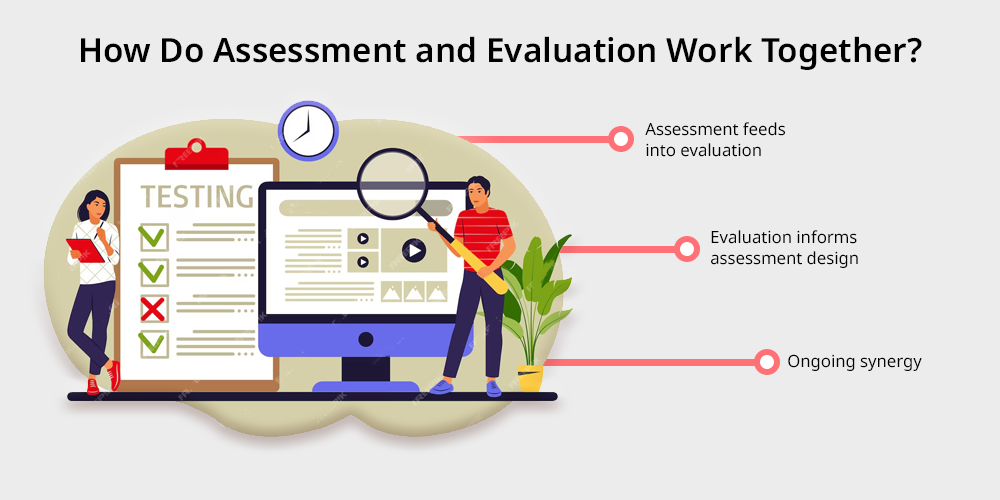
Assessment and evaluation are complementary processes that work in tandem to ensure effective learning and development.
- Assessment feeds into evaluation: Data collection done through assessments provides valuable inputs for evaluation in a given period of time for a particular course, process or situation. For example, student test scores can inform overall course effectiveness of the course and the learning process.
- Evaluation informs assessment design: Evaluations highlight gaps or areas needing improvement in the assessment, which can guide future assessments to be more effective and efficient.
- Ongoing synergy: While assessment is a continuous and diagnostic process, evaluation is conclusive and summative in nature. Together, they form a complete picture of performance and growth, when implemented strategically and efficiently.
Conclusion
Hence, from understanding of both the concepts, we can conclude that for academic, professional development and organizational development, assessments and evaluations are essential tools.
Evaluation is for a bigger motive in life where assessment is for life to have a bigger story to it.
Also, assessment is mainly focused on development and acts calculative and interprets, helping people to understand their potential and amenities.
And On the other hand, the evaluation focuses on the results and assessments enabling the stakeholders to identify the efficiency of the numerous measures and actions.
In the light of the above comparison, it can be noted that by implementing both assessments and evaluations in a strategic and calculative manner under proper guidance, people and businesses can achieve optimum results for the purpose of improving performance continuously and thus experience growth and success, in all aspects of life.

